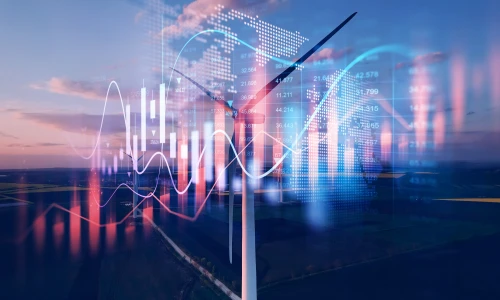
April 23rd, 2025
Join our CSEE Energy Day on 24 April – Book now
Renewable Energy Certificates (RECs) help track and promote clean energy by certifying that electricity was generated from renewable sources.

As the demand for renewable energy grows, businesses and individuals are looking for ways to support clean energy initiatives. One of the ways to do this is via Renewable Energy Certificates (RECs), which provide a method to track and incentivise renewable energy generation. But what exactly are RECs, and how do they work? We look at the concept of RECs, their role in the energy market, and their benefits in promoting sustainability.
Renewable Energy Certificates (RECs) are market-based instruments that certify that one megawatt-hour (MWh) of electricity was generated from a renewable energy source, such as wind, solar, or hydroelectric power. Each REC represents proof that clean energy has been produced and added to the power grid.
RECs are issued when a renewable energy generator produces electricity and delivers it to the grid. These certificates can then be bought and sold separately from the physical electricity. Companies and individuals can purchase RECs to offset their carbon footprint and support the renewable energy industry.
Unbundled RECs – Sold separately from electricity and can be purchased by anyone looking to support clean energy.
Bundled RECs – Sold together with electricity as part of a green power program offered by utilities.
By providing financial incentives for renewable energy production, RECs help drive investment in green energy projects. When businesses and individuals purchase RECs, they contribute to the demand for renewable energy, encouraging further development.
RECs serve as an accounting tool, preventing double counting and ensuring that renewable energy claims are legitimate. Organisations can use RECs to substantiate their sustainability commitments.
Meeting sustainability goals – Many companies aim to achieve carbon neutrality, and RECs provide a straightforward way to reduce their environmental impact.
Enhancing brand reputation – Consumers prefer eco-conscious brands, and RECs allow businesses to showcase their commitment to sustainability.
Regulatory compliance – Some regions require companies to source a certain percentage of their electricity from renewables, and RECs help meet these mandates.
Supporting clean energy initiatives – Purchasing RECs allows individuals to contribute to renewable energy growth, even if they cannot install solar panels or wind turbines.
Reducing carbon footprint – RECs provide a way to offset the emissions from household electricity consumption.
RECs certify that renewable energy was produced and delivered to the grid.
Carbon Offsets reduce or remove greenhouse gases from the atmosphere through projects like reforestation or methane capture.
If the goal is to support renewable energy development, RECs are the better option. However, if the focus is on directly counteracting emissions, carbon offsets may be more appropriate.
Critics argue that purchasing RECs does not always lead to new renewable energy projects. Some existing projects may sell RECs without needing additional financial support.
Some companies buy RECs without reducing their overall energy consumption, leading to concerns about greenwashing. Transparency and responsible purchasing practices can mitigate this issue.
Utility companies – Many electricity providers offer green power programs that include bundled RECs.
Marketplaces – Organisations like the Environmental Protection Agency (EPA) and Green-e provide certified RECs.
Direct purchases – Some renewable energy projects sell RECs directly to businesses and consumers.
Look for certified RECs from reputable organisations like Green-e Energy.
Check tracking systems such as the North American Renewables Registry (NAR) or Western Renewable Energy Generation Information System (WREGIS).
Renewable Energy Certificates (RECs) are a powerful tool for supporting the growth of clean energy and reducing carbon footprints. Whether for businesses or individuals, RECs provide a transparent and impactful way to promote sustainability. By purchasing RECs, consumers and organisations can help drive investment in renewable energy, contributing to a greener future.
As awareness of climate change grows, investing in RECs can be an essential part of a broader sustainability strategy. The transition to clean energy requires collective action, and RECs offer a simple yet effective way to be part of the solution.
Leverage real-time carbon tracking to reduce your carbon footprint and meet decarbonisation goals.

April 23rd, 2025

April 22nd, 2025

April 21st, 2025